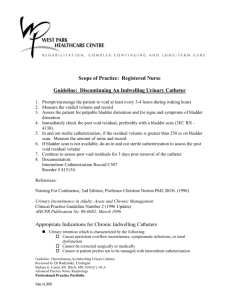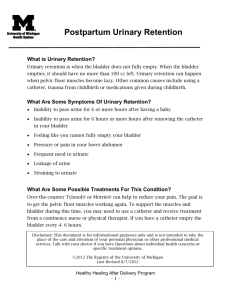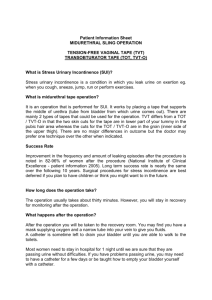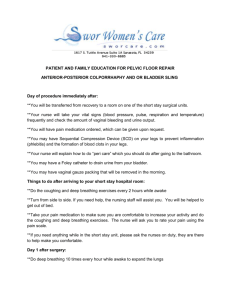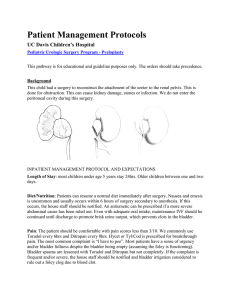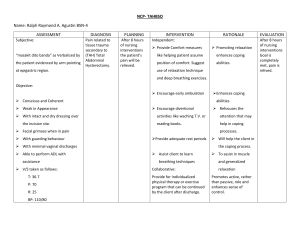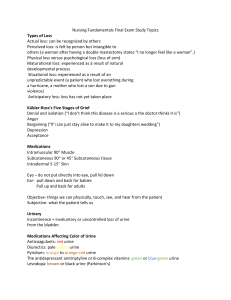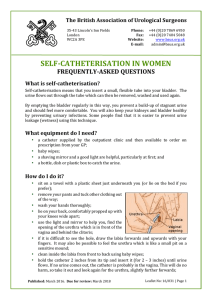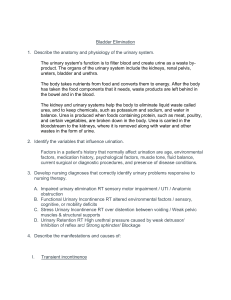Oral Report 1: Week of 12/3/2007
advertisement
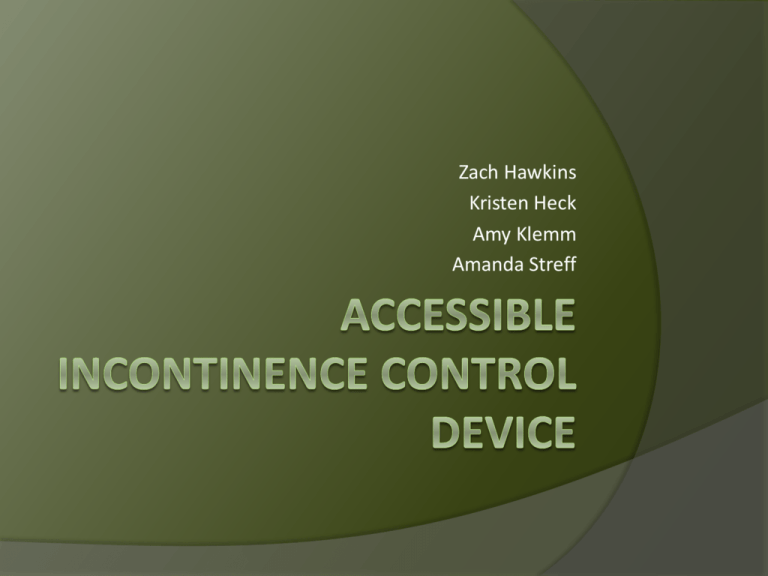
Zach Hawkins Kristen Heck Amy Klemm Amanda Streff What is Urinary Incontinence? Urge Incontinence Involuntary loss of urine associated with abrupt and strong desire to void Stress Incontinence Involuntary loss of urine during coughing, sneezing, laughing, etc Overflow Incontinence Involuntary loss of urine associated with over distension of bladder Functional Incontinence No recognition of need to void, inability to make it to the toilet in time Causes Neurological disorders Parkinson’s, Multiple Sclerosis, Alzheimer‘s Stroke, brain tumor, spinal injury Hormone imbalances Menopause Prostate cancer Loss of muscle tone Childbirth, old age Prevalence 13 million people in the U.S. 10-35% of adults 50% of the 1.5 million residents in nursing homes leading cause of admission to a nursing home may lead to pressure sores and ulcers, possibly resulting in secondary infections http://www.emedicine.com/med/topic3085.htm Treatment Options Exercises Electrical stimulation Timed voiding/ bladder training Medication Surgery Sling Catheterization Artificial Urinary Sphincter Available External Devices Penile clamp Puts external pressure on the male urethra Sling completely inside your body places pressure on the urethra, reducing the possibility of urine leakage Absorbent pads Available Internal Devices Catheter Indwelling catheter ○ Drainage bag secured to inside of leg Intermittent (short-term) catheter Suprapubic catheter ○ placed directly into the bladder through the abdomen Mama-sure Ultima Internal electrical stimulator AMS 800 artificial urinary sphincter implantable, fluid-filled, solid silicone elastomer Specifications Desired Comply with industry standards for urological medical devices Be able to remain indwelling for 30 days Easily operated by patient with disabilities Allow emptying of the bladder when desired Prevent urine flow when not desired Provide an indication of the status of the bladder. Completed Work Set up with appointment with Dr. Doug Milam Researched externally controlled implantable stimulation device Current Work Continuing to correspond with Dr. Katherine Cameron Meeting with Dr. Doug Milam at 5:00pm Future Work Interview patients with incontinence control devices to determine needs and desires Establish a way to indicate bladder status Acknowledgments Jao Ou Dr. Katherine Cameron Chris Constantinou Qiyu Peng Dr. Zhang Any Questions?
